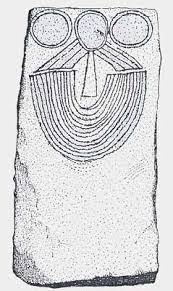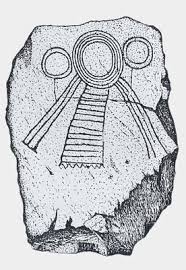The Valcamonica "Astronauts"
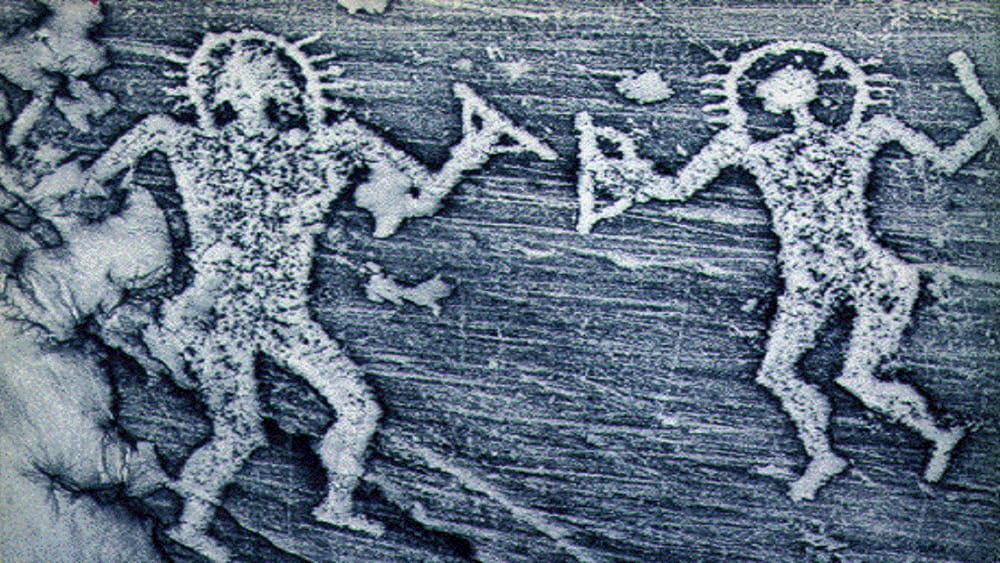
The rock engravings of Val Camonica are found in the province of Brescia and constitute one of the largest collections of prehistoric petroglyphs in the world.
Rock art is reported on about 2.000 rocks in over 180 locations in 24 municipalities, with a particular concentration in the municipalities of Capo di Ponte, Ceto (Nadro), Cimbergo and Paspardo, Sonico, Sellero, Darfo Boario Terme, Ossimo where there are 8 parks equipped for visiting.
It is the first UNESCO World Heritage Site recognized in Italy (1979) with over 140,000 figures, although new uninterrupted discoveries have progressively increased the total number, bringing them up to 300.000.
When the Würm Glaciation was over, Valcamonica welcomed the first human presence between 14,000 and 10,000 years ago. The signs unanimously considered by scholars to be the oldest ascertained in Valcamonica are attributed to the Epipaleolithic period (VII millennium BC circa).
The most recent, excluding the vandalism of modern generations, dates back to the end of the 19th century.
Over an incredible 10,000 years, the engravings were produced at intermittent rates and with varying intensities. Therefore, not so much the quantity as the millenary persistence of the historical tradition is the most amazing element of the engravings, which unfold within a historical cycle that has no equal in European prehistory.
The rock art we are going to take into account is specifically the one left by the enigmatic and mysterious civilization known as the Camuni.
The Camuni were a civilization from ancient Italy of Indo-European heritage that lived in Val Camonica, in the central Alps. They are among the people that left the most petroglyphs in the world, with approximately 300.000 works scattered through the valley.
Their culture, for us, is in fact deeply tied to those petroglyphs as very little is known about the rest of their lifestyle, and little to no inhabited center, necropolis, or tools relating to them have been found.
The name “Camuni” itself is of unknown origin: the historian Johann Jacob Hofmann, in his Lexicon Universale, assumes that the similarity of the word Camuni to the word “Camulo”, a divinity of Etruscan and Celtic tribes, might be the linking factor. In fact, among the petroglyphs left by them, several images of the horned God “Cernunnos”, worshipped by the Celts, can be found.
Among the most famous figures between the thousands of petroglyphs are certainly those called “The Astronauts”, which date back to 8.000 BCE.

In the scenes, anthropomorphic figures have a shining helmet on the head. In their hands, they have two tools, a straight one and a three-pointed one or a trident, which together with the shining element on the head bears a great resemblance to deity images found in South American, Egyptian, Australian, Indian and Sumerian cultures, linking to images of gods such as Viracocha, Zeus, Baal, and many others.
There is another petroglyph depicting similar figures, with two beings rather than one, both also represented wearing shining helmets and a trident on their hands.
The “Astronaut” (which is the actual name given to this petroglyph by the researchers) seems to be coming down from a four-sided structure or a “Rosa Camuna”, from which is depicted an arrow pointing down to emphasize the descending movement of the being.
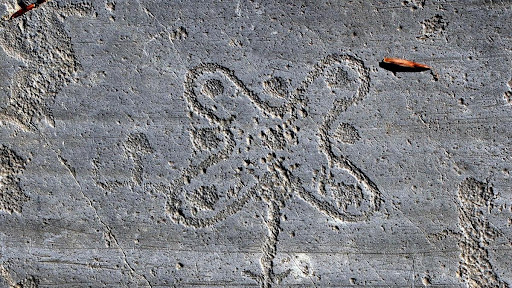
This symbol is a recurring one among the rock art of the Camuni, and it is very similar to the swastika, a symbol found in the rock art of almost any continent, with similar designs and interpretations. We don’t know when or where this symbol originated, but we have examples that go back as far as 10.000 BCE.
The “Rosa Camuna” was adopted by Lombardia as the symbol of the region.
The swastika is not the only ancient recurring widespread symbol adopted by the Camuni. Interestingly, we can also find the solar disk, represented in the prehistoric rock art of Native American cultures, in the Egyptian religion, and in Zoroastrianism.
There are countless other petroglyphs of mysterious origins, like the many symmetrical figures or the ones that seem to depict incredibly tall, horned human beings, in the fashion of the North American ones.
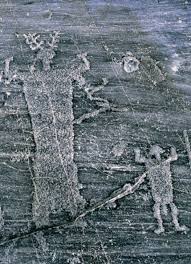
The Camuni were later absorbed by the Roman Empire when they were enslaved as a result of a battle against Publio Silio (the victory is celebrated in the “Tropaeum Alpium”, a monument erected in 7 BCE that reported the name “Camvunni” as the conquered tribe) and then, with the coming of the Christianity, their menhir statues and the altar of Minerva were burned and destroyed, thus completing the total absorption and vanishing of their culture.
Among the several striking similarities with other ancient cultures is the figure of the solar disk, portrayed almost identical to the Egyptian one, also resembling the Ankh.
